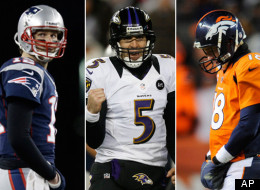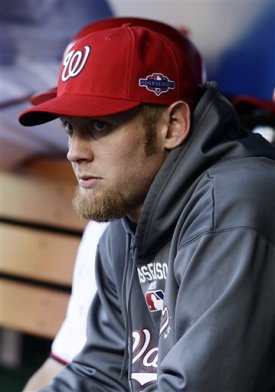Last night, Nationals pitcher Stephen Strasburg threw seven shutout innings, lowering his earned run average to 2.24 which is the 5th best in the National League. However, Washington did not score any runs either, and ended up losing the game 4-0. Unfortunately, this has become a common occurrence this season, as Strasburg has received a major league low 2.44 runs per game from the offense, causing him to only have a 4-6 record.
With the All-Star game coming up, this lack of run support will hurt the ace’s chances to make the team. Unfortunately win/loss record is a prominent, overrated statistic used to evaluate pitchers despite the reliance on outside factors. If you were a manager choosing the NL pitchers, which three would you pick from the players below?
Pitcher A – Record of 10-3, team is 49-33 and is one of the most popular/successful teams
Pitcher B – Record of 9-4, 13-year veteran and former all-star
Pitcher C – Record of 9-6, team is 49-34 and is in first place
Pitcher D – Record of 4-6, team is playing .500 and under-achieving
Pitcher E – Record of 5-4, on a team with the worst record and attendance in the NL
Pitcher F – Record of 5-6, team is 11 games below .500 and in fourth place.
Clearly managers, using the antiquated notion of helping your team win is the same as a win/loss record, would choose pitchers A, B, and C. Meanwhile, there are plenty of other stats to choose from to evaluate pitchers, including earned run average (ERA), opponents batting average (BAA), and walks/hits per innings pitched (WHIP). Having read
MoneyBall recently, I have even more profound appreciation for more efficient and revealing stats, like wins above replacement (WAR) and defense-independent ERA (DIPS). Now look how the pitchers above rank using the five metrics mentioned:
Pitcher A – ERA of 3.75 (31st in the NL out of 32 qualifying pitchers), 25th in WAR, 22nd in WHIP
Pitcher B – Dead last in DIPS, WAR, and WHIP, 30th in ERA
Pitcher C – Not in the top 26 in any category.
Pitcher D – 5th in ERA, top 10 in three other categories
Pitcher E – 3rd in BAA, top 11 in three others
Pitcher F – 4th in BAA, top 13 in three others
It would now make more sense to choose pitchers D, E, and F to the All-Star game using these stats. When looking at the averages of all these rankings, these three pitchers would rank in the top 10 overall in the NL, worthy of one of the nine starting pitcher spots on the team. Meanwhile pitchers A, B, and C are ranked 22nd, 31st, and 32nd.
Will pitchers D (Strasburg), E, and F make the team? We will find out Saturday when the rosters are revealed.





















